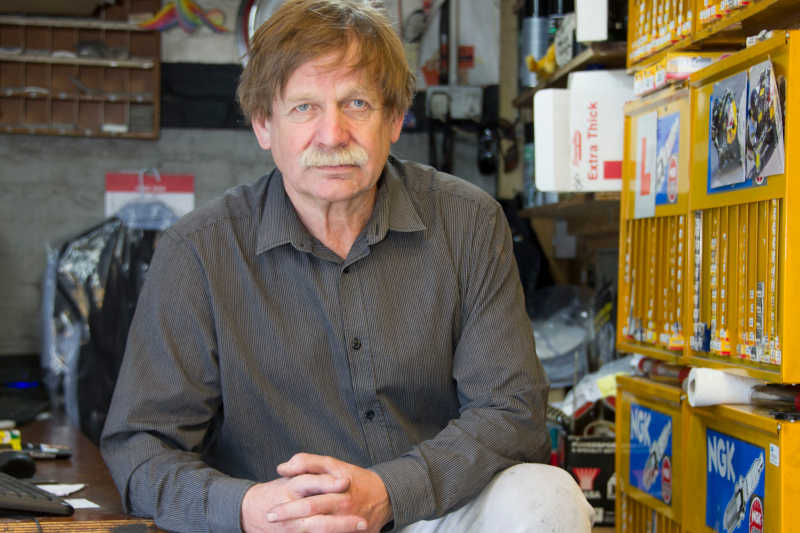Everything I do ends up with lashings of anxiety. My bike was/is due its first MOT just after Christmas so at my KTM dealer getting a service done a couple of weeks back I asked whether my high beam Baja Squadron Pro would pass its test. I knew that it was sold as not street legal and I also know that it is blindingly bright. I was told that it would be ok but the dipped headlight would bring ‘an instant fail’. And why? Because its beam sloped up to the right rather than the left which is how LHD countries require headlights to point. (See below – subtle, eh?)

So, on the mail to Aurora Rally equipment, based in definitely RHD Greece. They pointed me helpfully to a Hella light on Amazon with a LH slope, ordered then delivered a few days later. I thought I would replace both headlamps and brought the bike back home from its usual location in Cambridge. Its not really that difficult to remove the front of the tower, just a little time consuming. For me though, the new light looked like it could never fit because the connection seemed totally different, so every step proceeded with a sense that everything would go pearshaped on this job at any moment.

Needless to say everything worked out well. The dipped beam is a small LED (over €100) which easily replaced the halogen bulb that came with the new light, though the Aurora tower does not seem to have enough upwards adjustment for the dipped beam.
So, rather than head back up to Ipswich I took the bike to a local MOT and mechanics, ChasBikes on Kennington Road. I was uncertain that the bike would get through.
It was easy to book, and there was no waiting time when I arrived and the test was done in half an hour, possibly less. The place is great and a welcome antidote for those corporate dealers where you get a coffee from a machine while your bike is whisked off and the mechanic’s space is out of bounds to customers. This is an Old school motorcycle garage at its best. I sat about 10 feet away from the mechanic testing my bike and could explain its oddities – like the headlight only comes on after the bike has moved a couple of yards. Chas and his mechanic both have an enjoyable dry humour (‘when electric starts came out I thought this won’t catch on’). I’ll be back for sure – next year at least. Chas mentioned that he had lived in East Africa, but I didn’t enquire further. The bike passed and I learned a few things about how the bureaucratic MOT system works. Interestingly this is what I found when looking them up to do a Google review:
‘CHASBIKES was started in 1984 by Charles Holt M.A.(OXON), a former East African wildlife biologist. Originally located on an industrial estate in Greenwich, the company hired out Honda CX500’s to dispatch riders, before beginning to specialise in repairing them for the public. The company then moved on to work on other popular dispatch riding models….’ https://www.yell.com/biz/chasbikes-ltd-london-6519580/
And here he is:

















